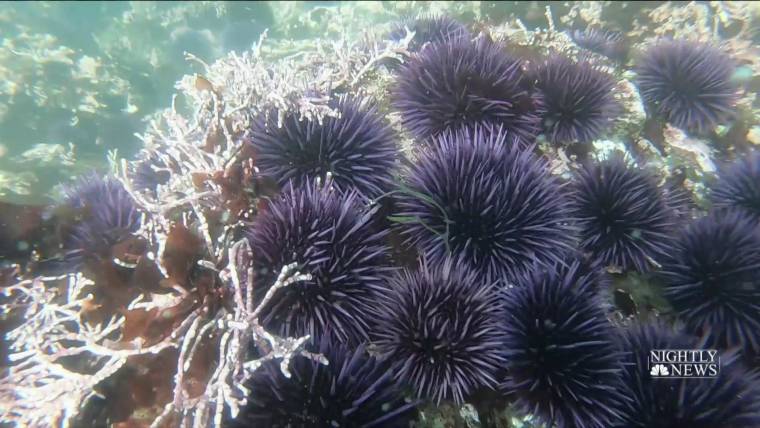The waters off California are acidifying twice as rapidly as elsewhere on Earth, according to a study published Monday, which suggests that climate change is likely hastening and worsening chemical changes in the ocean that could threaten seafood and fisheries.
Oceans play an important role in the planet's delicate carbon cycle, acting as a crucial reservoir that absorbs and stores carbon dioxide from the atmosphere. But the new research finds that although oceans can withstand some natural variations in climate, global warming may be adding to the stress on those ecosystems and overwhelming their ability to cope.
"The system is adapted to experience and be able to thrive in a variable environment, but when you add extra stress, these changes become more extreme," said Emily Osborne, a researcher at the National Oceanic and Atmospheric Administration, or NOAA, the lead author of the study, which was published in the journal Nature Geoscience.
Osborne and her colleagues analyzed almost 2,000 fossil shells of a tiny organism known as planktonic foraminifera to create a 100-year history of ocean acidification along the California coast. The organisms, which live for only about a month, use calcium carbonate to build their shells, which means they leave behind clues about their environment.
"We can see how they've grown and how they're influenced by the ambient carbon chemistry of the seawater around them," Osborne said. "They capture the chemistry in their shell that is the chemistry of the ocean, too."
Let our news meet your inbox. The news and stories that matters, delivered weekday mornings.
It's estimated that oceans around the world have absorbed up to 31 percent of carbon dioxide emissions from 1994 to 2007 — equivalent to 34 billion metric tons of carbon — according to a NOAA study published in the journal Science in March. When carbon dioxide mixes with ocean water, it triggers chemical reactions that make the water more acidic.
As oceans become more acidic, sea creatures struggle to build up hardier shells, Osborne said, which allowed her and her colleagues to study the thickness of foraminifera shells and trace levels of ocean acidity back through time. They found that the organisms' shells were thinning as oceans became more acidic.
"We saw a clear, long-term declining trend with shell thickness that aligns with the signature of carbon that comes from the atmosphere," she said.
By zeroing in on specific signatures of carbon, the researchers were able to separate out natural climate variations that also cause chemical fluctuations along the West Coast, such as El Niño and La Niña cycles.
"That variability has its own chemical signature associated with it, so while they do overlap, we were able to disentangle natural variations that way," Osborne said.
Previous studies have shown that oceans have experienced a decline of 0.1 in pH since the Industrial Revolution in 1750. The pH scale ranges from 0 to 14, and lower values are more acidic, while higher values are more basic.
Similar data for California's coastal waters for that entire period don't exist, but Osborne and her colleagues found that in just the past century, California's coastal waters have experienced a 0.21 decline in pH — twice the global average over more than 2½ centuries.
Although more research is needed, Osborne said, the chemical changes could have negative consequences for the vibrant fisheries off California and elsewhere around the world.
"There are different stressors like warmer temperatures, decreased oxygen concentration and multiple other things happening in concert to affect these species," she said. "There's a vast amount of research that has happened and continues to happen to get at what the responses will be and what it means broadly in terms of how ecosystems will respond."

